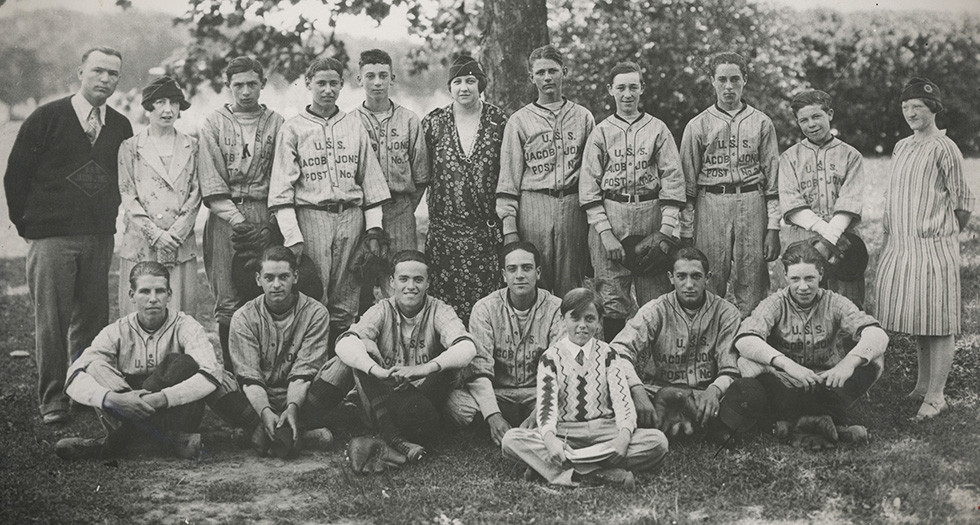
Why World War I veterans planted the seed that would inspire more than 10 million young athletes at a department convention in South Dakota.
Editor’s note: The following is an excerpt from the 88-page “Century of Citizenship Through Sportsmanship” bookazine produced for the centennial of American Legion Baseball. The program, with more than 10 million participants since its founding, celebrates its 100th birthday July 17.
The whole concept of American Legion Baseball was borne of World War I and the experiences of those who served overseas among young people who were not especially fit, nor particularly literate, or knowledgeable about the reasons they had been called to arms. All of those conditions were reasons for The American Legion’s first generation to develop programs to strengthen the nation by mentoring youth.
“You remember it was only a few years ago we commenced hastily and earnestly to take stock of our boy power and manpower, because we realized in those days that it is the nation of physically fit men who would win the war,” John L. Griffith told delegates to The American Legion Department of South Dakota Convention on July 17, 1925. “We took stock and found approximately half of our boys were physically defective.”
Griffith, an Army major in World War I who went on to serve as the first commissioner of athletics in the Big 10 Conference, was invited by his friend and fellow veteran, Department Commander Frank McCormick, to address Legionnaires in Milbank, S.D.
There and then, the seeds of American Legion Baseball were sewn.
Griffith had led physical fitness training for troops during the war and believed there was more to the value of competitive sports than trophies and bragging rights. He told the South Dakota Legionnaires that organized athletics could not only correct the physical fitness deficiencies of young men at the time, but The American Legion was ideally suited to prepare a new generation for war, if one should come, in more ways than physical fitness. “And if we do not have another war, at least they will be better citizens,” Griffith suggested.
The South Dakota Legionnaires drafted and passed a resolution to advance the concept up the chain. Four months later, at The American Legion National Convention in Omaha, Neb., the program was authorized as a national initiative.
WHEREAS, Athletic competition conducted under proper direction are the best-known means of teaching boys good sportsmanship, an essential of good citizenship, and in addition have genuine civic value; and
WHEREAS, A more physically fit citizenship can be obtained by extending the benefits of athletic training to the greatest possible number of boys and young men, a large percentage of whom are not receiving adequate training at present. Be it, therefore,
RESOLVED, That The American Legion, in seventh annual convention assembled, adopt the general policy of extending athletic competition to more boys in America, and that the organization promote and cooperate with other organizations in promoting athletic programs and in securing playgrounds and other facilities therefore; and, be it further
RESOLVED, That the National Americanism Commission be empowered to appoint a man to be designated as the national athletic director, to direct the general athletic program of The American Legion, of which junior baseball championships should be a part.
Over the next century, more than 10 million young people from all walks of life and skill levels would learn teamwork, discipline, sportsmanship and citizenship from the veteran-run program. For many of those players, the game they loved would be hard-wired into their sense of Americanism.
Jeff Stoffer is director of the American Legion Media & Communications Division.
- Baseball

